
US-Army BDU Camouflage Development
US-Army BDU Camouflage Development
The Evolution and Development of the United States Military camouflage Color Schemes and their Relevance in Wars Throughout the 20th and the 21st Century; An Examination of the World War 1, World War 2, The Cold War, The Gulf War and War on Terror.
Military camouflage is the use of simulation colors with either the environment or infrastructure during combat to avoid being seen by the enemy. Different armies around the world design their army uniforms based on their terrain to get the ground advantage over their enemies. The US Army is no different. Gauging from their involvement in numerous conflicts since World War I, their military uniform have changed a great deal.
#camouflage #usarmy
The historical development of US Army Attire Patterns
The journey to a perfect military clothing and tactical equipment in the US Military starts after World War 1. Until today, various elements are still added to this design to make it more adaptive to different terrains and battlefields.
World War I (1914 – 1918)
Before WW1, the American troops did not have a defined camouflage uniform for war other than the traditional olive drab wool and khaki cotton colored. The military uniforms were more suited for parades than on the battlefield. The sophistication of the German troops and how their combat uniforms helped them during the war, was emulated by the American forces. That was the beginning of the American military science of guise.
As the war progressed, the battlefield was moved to trenches, which made helmets the primary camouflage clothing. Towards the end of the war, the Americans adopted the helmet painting based on military tactics and physical terrain. The platoon leaders were responsible for designing the helmets patterns used in battles that followed.
 |
 |
 |
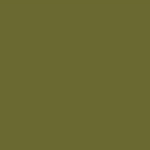 |
World War 2 (1939 – 1945)
By the time the world was going to the WW2, the US Army had not developed a specific camouflage pattern for army uniforms. They still had khaki as their preferred uniform. Their first attempt to standardize the uniform was done in 1940, and their first camouflaged uniforms were done in 1942 by the orders of General Douglas MacArthur. They were designed for use in the jungle as they had green and brown spots, which were alternated with a variation of brown. In total, the uniform had five colors and was christened “Frog Skin”, thanks to its pattern.

In 1943, the first full gear use of camouflage army attire by the Americans was evident at the Solomon Island battle. The “Frogskin” proved useful in this operation as the jungle colors assimilated perfectly with the Island terrain. However, as the war progressed, the battle of the sandy Tawara Island did not offer the much-needed cover. That forced the army engineers to come up with alternative ideas.
The Cold War, Korea, and Vietnam
The Germans had the upper hand in using specialized camouflage clothing for war during world war II like the "Splittertarn" and the "Eichenlaubmuster".
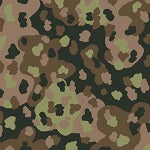 |
 |
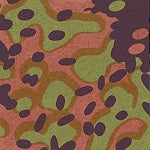 |
 |
Americans had to tone down to avoid friendly fire among themselves. The contrast between the battles of Solomon and Tawara Island made standardized military uniforms for all theatres a long shot, especially if the army was divided into various scenarios fighting on different continents. The only standard designed military clothing piece across the army was the helmet.
The US tried using a dark brown uniform with shades of light brown, beige, and russet on a tan background during the beginning of the Vietnam War, but it worked against them.

However, it was adopted on the helmet. After the war, the Army designers created a universal jungle uniform for all seasons and terrain. It maintained the mid-brown colors with touches of green grass, lime green, and black. It was widely assimilated by many armies around the world, and still is to date.
This pattern was used during the cold war, but it was the Korean War (1950 -1953) that shaped what would be used for the rest of the war. However, there were other patterns used during the war based on the terrain. There was a touch of leaf-patterned clothing used on the dense South East Asia and the tiger-stripe uniform. The tiger-stripes were outsourced for that specific use and were not recognized as the United States Army military fatigue.
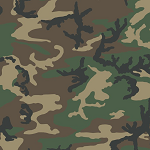 |
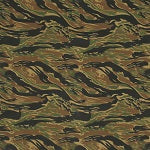 |
Woodland, Tiger-Stripes
Gulf war
The DBDU (Desert Battle Dress Uniform) was purposely designed for combat in arid areas. It proved instrumental during the Gulf War. Designed in 1976, the uniform took the inspiration from cookie dough and a chocolate chip. A light tone overlay with pale green and brown bands took most of the design. There were touches of black and white spots to blend in the stony terrain in the deserts.
 |
 |
DCU, DBDU
The design was emulated by the Military in Iraq, South Korea, United Arab Emirates, Oman, Kuwait, and Saudi Arabia. South Africa, Kazakhstan, and Palestine borrowed heavily the six-color desert pattern and incorporated it into their various disciplined forces stocks.
War on Terror
The DBDU was replaced by the DCU (Desert Camouflaged Uniform) and later the ACU whose use, though widely celebrated, could not stand the test of time. Its dry run (California Desert) was not a replica of the actual battlefield (the Middle East and East Africa). ACU was used in the war against terror, which played out from the early 2000s. Most of it was done in the same terrain, which made its adoption quite faster. The war is still fought today and has transcended through changes in military fatigue to capture modernity and universal blending in different scenarios.
 |
 |
OCP, ACU
Today
As the variety of inspired environmental uniforms increased, there was a need to standardize military attire. The design developments since the early 1990s had worked in favor of the US Military. There was a need to consolidate the color scheme to form a universal pattern uniform. That is how the Universal Camouflaged Pattern was formed. It brought together tan, green, and grey to represent the desert, urban, and woodland scenarios. Black was removed due to its contrasting color, which is visible from afar. It is nicknamed digital cover as the color mix matches the ones on digital pixels.

The current US military attire being incorporated is the OCP (Operational Camouflaged Pattern) designed in the 2014 summer. It is nicknamed the Scorpion W2. Its engineering was brought forth by the need to develop a proper cover for US Soldiers in Afghanistan. Over the years, each branch has designed the OCP variant to capture its terrain. They include darker variants of the woodland and light version for the arid
environment or the Marine Corp US4CES.
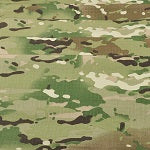 |
 |
Multicam, US4CES
Other Military Uniforms
Besides the battlefield, the army has a special uniform for other official assignments. The Green Uniform, though conceptualized in a battlefield during WW2, is still used to date. It is a symbol of the Greatest Generation and is worn in honor of their service.
Why the different patterns were developed
Military advantage - the pride of any military is its identity, and the uniform forms the basic part of acknowledgment. Also, visibility makes it easy to identify a colleague from an enemy without complex evaluation. Blend with the environment - the art of warfare is a surprise. If the military clothing resembles the surrounding, it limits identification and surveillance, especially ground to air. Adaptability to emerging military trends - as war becomes sophisticated, the constant need for better facilities and an enabling environment becomes necessary. Also, wars (prevention and participation) are become more expensive by the day. There is a need to create a universal attire that cuts across all military departments.
You need US Army BDU, take a look here:
